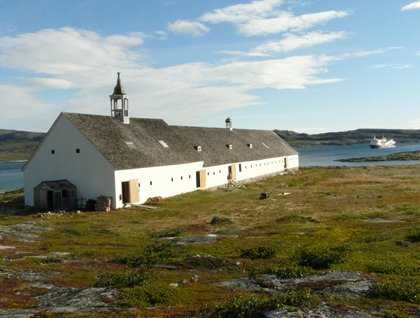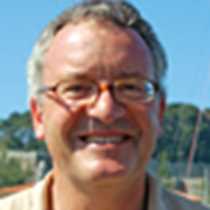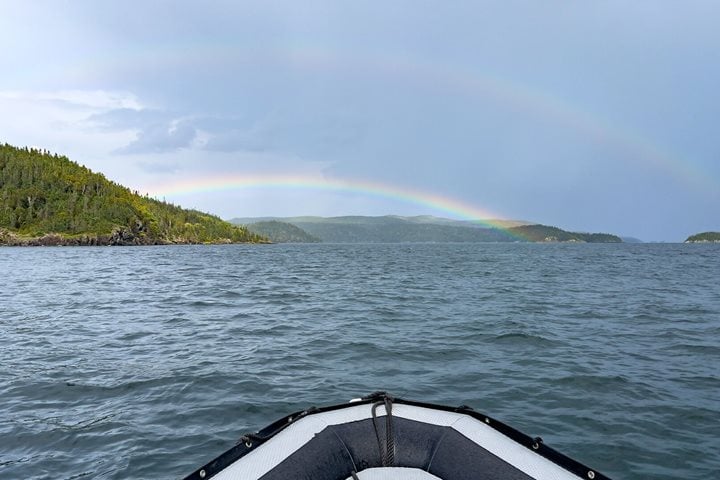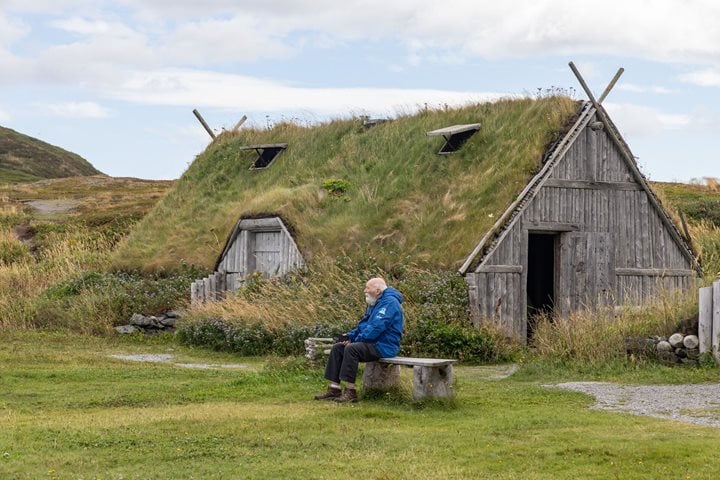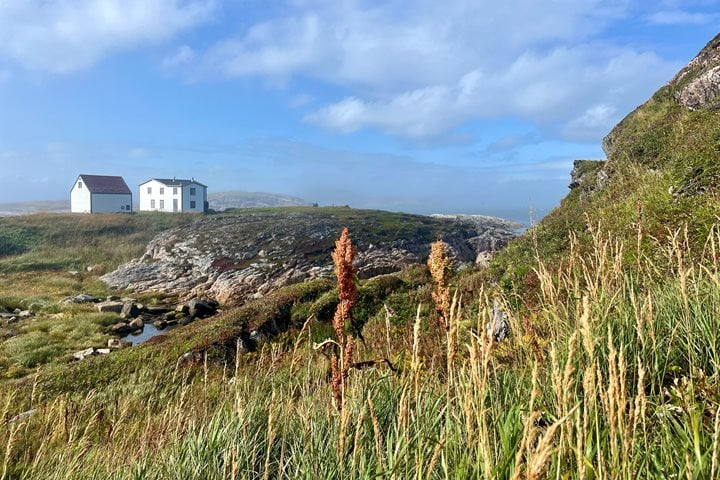Clear skies and an early breakfast prepared us for our landing at Hebron, one of eight former Moravian Mission sites along the Labrador coast and by far the best preserved. Indeed, the Canadian Parks Authority embarked on a remarkable program of restoration of this historic site that includes the church meeting house and school, its adjacent garden plot and other buildings such as the Hudson’s Bay Company Office and Blubber House. We had visited another Moravian site the day before at Ramah - where the physical remains were little more that intriguing bumps on the ground surface – but today’s visit was revelatory. One could sense the Mission settlement in action, frozen in time (and, it has to be said, a little battered by half a century of north Atlantic gales) at the point of its sudden and melancholy evacuation in 1959 after over a century and quarter of service to the community.
Having their distant origins in Moravia (one of the provinces of today’s Czech Republic), by the eighteenth century the Moravians had migrated to northern Germany and on out into Denmark and Britain. Their emphasis was on personal piety, that is, regular Bible study and prayer, in hymn singing (frowned on by some other Protestants as the introduction of secular songs into the sanctuary of worship) and mission. By the 1830s, there was growing awareness in Europe of the Arctic regions, with the first voyage of HMS Beagle bringing some specimens of Fuegian aboriginals back to Britain (where they were presented to the King) and talk of finding a way through the “North-west Passage,” drawing the public’s attention to the peoples then known as the esqimaux. To prospective missionaries these peoples represented a challenge as thrilling as that of any unconquered peak for a mountaineer. According to Christ’s own words in the Gospels, the new world would be ushered in only after the Gospel had been preached at “the uttermost ends of the earth.” Where else might that be if not in Tierra del Fuego or Labrador? Missions to these marginal outposts of the global community would hasten on the divine eschatological plan; the missionaries would be active participants in the Divine Plan.
We are now far less sanguine in our attitude to missionary activity, wincing at the unquestioned cultural superiority those Europeans undoubtedly felt towards the heathen they took into their care. They brought medicine but, ironically, also disease; in the case of the Yanama of Tierra del Fuego, European diseases led to the demise of the entire population within a century of the arrival of the first Anglican missionaries. But there is also a plus column. The missionaries were well-intentioned and caring; they brought literacy and new skills, softening the impact of what we must now see as an inevitable process of globalization. There was much poignancy in walking around the site, seeing the early ages of death recorded on the gravestones in the cemetery but also in reading the contemporary apology issued by the government of Newfoundland to the people of this community – not for founding the settlement (in which it played no part) but for winding it up so abruptly in 1959. Our guides were delightful young people from the local Inuit community living proof of a tradition battered and bruised yet unbroken.
In the afternoon, after a lively presentation from the Rt Hon Kim Campbell on similarities and differences between Canada and the United States, we entered the scenically spectacular waters of Mugford Tickle and were treated to several sightings of black bear and a peregrine falcon apparently attracted to the afternoon barbeque snacks being served on the aft deck!

